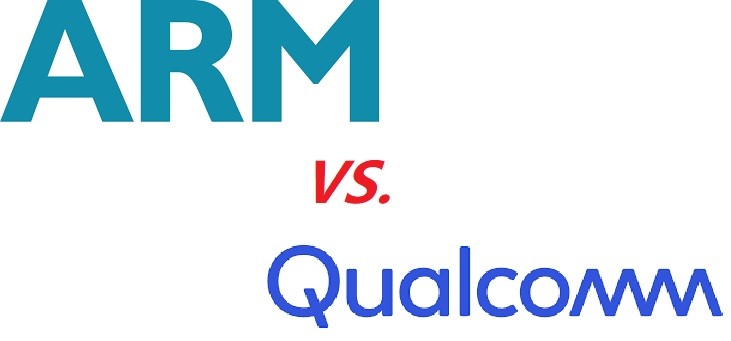In the turbulent arena of the semiconductor industry, the licensing dispute between Arm and Qualcomm is like a shock bomb, and its ripple effect goes far beyond the scope of the two companies themselves, and is affecting every corner of the global smartphone and PC market. This dispute is not only about Qualcomm's right to use Arm's intellectual property, but also a direct collision of different interpretations of the cooperation agreement between the two parties, and the complexity and far-reaching impact behind it cannot be underestimated.
1. The core of the dispute: the licensing turmoil caused by the acquisition of Nuvia
Arm's accusations hit the nail on the head, pointing out that Qualcomm used Nuvia's custom chip design without authorization after acquiring Nuvia, which directly violated the licensing agreement signed by the two parties. Arm has officially taken the first step in the legal process, demanding that Qualcomm immediately rectify the breach and warn that if Qualcomm fails to respond in a timely manner, it will face serious consequences for the termination of the agreement. According to industry insiders, Arm has made full preparations for the upcoming trial in December, and its determination can be seen.
Qualcomm, for its part, has taken a-for-tat approach and firmly denied all of Arm's allegations. Qualcomm believes that Arm's move is an unreasonable crackdown on long-term partners, aimed at preventing Qualcomm from launching high-performance CPU products, and trying to extract more benefits by raising licensing rates. Qualcomm emphasized that a wide range of rights have been clearly covered in the architecture license agreement between the two parties, and Qualcomm has the right to carry out independent innovation and development in accordance with the spirit of the agreement. Qualcomm is confident in the upcoming legal action and has warned that Arm's anti-competitive behavior will not be tolerated.
2. Qualcomm's strategic transformation: the road to self-developed chips
Behind this dispute is a profound embodiment of Qualcomm's strategic transformation in the semiconductor field. Faced with the limitations of Arm's public architecture, Qualcomm began to seek to reduce its dependence on it and instead explore the path of self-developed chips. This strategic shift is vividly demonstrated in Qualcomm's recently launched flagship chip, the Snapdragon 8 Elite. For the first time, the Snapdragon 8 Elite is equipped with Qualcomm's own Oryon CPU, which not only delivers excellent performance, but also deeply integrates artificial intelligence technology to bring an unprecedented experience to smartphone platforms. Market experts generally believe that this is an important step for Qualcomm in the field of PC CPUs, and it heralds its future ambitions in the field of high-performance computing.
In particular, the rumored acquisition intention between Qualcomm and Intel has added a bit of confusion to the dispute. In the face of Intel, the overlord of the x86 camp, if Qualcomm can really successfully achieve the acquisition, it will undoubtedly inject strong impetus into its self-developed chip strategy and further promote its expansion in the high-performance computing market.

Figure: Arm intends to cancel Qualcomm's long-term license to use its intellectual property to design chips
3. Impact of the dispute: potential changes in the market landscape
If Arm wins legally, the consequences will be dire. Qualcomm and its more than 20 suppliers may be forced to stop shipments of new AIPCs (Arm-based personal computers), which will directly lead to billions of dollars in losses. What's more, this result will seriously restrict consumers' choice and hinder the pace of product innovation in the mobile phone and PC market in the future.
Taking specific data as an example, according to industry research institutions, Qualcomm launches up to 75 million Arm-based chips on the market every year, which are widely used in terminal devices such as smartphones, tablets and PCs. Once Arm's accusations are confirmed, Qualcomm will lose this part of the market, which will not only cause a heavy blow to its own performance, but also have a knock-on effect on the entire semiconductor industry chain.
4. Industry reflection: the balance between intellectual property and technological innovation
This dispute is not only a legal battle, but also a profound reflection on the future development direction of the semiconductor industry. In the rapidly changing technology field, how to balance the protection of intellectual property rights and the need for technological innovation has become an urgent problem to be solved. This is both a challenge and an opportunity for industry players. Regardless of the outcome, the dispute will push the semiconductor industry to re-examine its cooperation model and competitive strategy, injecting new uncertainty into the future market landscape.
To sum up, the licensing dispute between Arm and Qualcomm is not only related to the vital interests of the two companies, but also has a far-reaching impact on the entire semiconductor industry. In this dispute, we have seen the complex relationship between technological innovation and intellectual property protection, as well as the resilience and determination of industry players in the face of challenges. In the future, with the continuous progress of technology and the continuous change of the market, the semiconductor industry will usher in more fierce competition and broader development prospects.






